
In 1780, the American War of Independence had been raging for five years and the British were no nearer to subduing their former colonists. Fighting in the north had seen the British win many battles but also suffer serious setbacks. Now, they were ready to try a new strategy and an army of 8,000 men boarded ships at New York before heading south to capture the city of Charleston. This was to be the launchpad for a new campaign.
Charleston was well defended by both regular troops and militia, and reinforcements were also sent to bolster the garrison, but the British were able to mount a patient and effective siege that eventually forced the Americans to surrender. Thousands of troops were captured and the American cause appeared to have been mortally wounded, especially as the British followed up with a major victory at the Battle of Camden. Crucially, enough American forces remained to keep the spark of the revolution alive, and the southern colonies rallied to once more frustrate British plans.
Charleston’s defences
In 1780, the city of Charleston occupied the lower end of the peninsula between the Cooper and Ashley Rivers, on the coast of South Carolina. It was the fourth-largest city in the colonies at the time and plans had been underway for some time to strengthen it. A small British force had threatened the city the previous year, prompting the improvement of defences that had first been constructed in the 1750s.
Denne historien er fra Issue 108-utgaven av History of War.
Start din 7-dagers gratis prøveperiode på Magzter GOLD for å få tilgang til tusenvis av utvalgte premiumhistorier og 9000+ magasiner og aviser.
Allerede abonnent ? Logg på
Denne historien er fra Issue 108-utgaven av History of War.
Start din 7-dagers gratis prøveperiode på Magzter GOLD for å få tilgang til tusenvis av utvalgte premiumhistorier og 9000+ magasiner og aviser.
Allerede abonnent? Logg på

NAUMACHIA TRUTH BEHIND ROME'S GLADIATOR SEA BATTLES
In their quest for evermore novel and bloody entertainment, the Romans staged enormous naval fights on artificial lakes
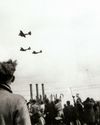
OPERATION MANNA
In late April 1945, millions of Dutch civilians were starving as Nazi retribution for the failed Operation Market Garden cut off supplies. eet as In response, Allied bombers launched a risky mission to air-drop food

GASSING HITLER
Just a month before the end of WWI, the future Fuhrer was blinded by a British shell and invalided away from the frontline. Over a century later, has the artillery brigade that launched the fateful attack finally been identified?
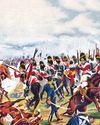
SALAMANCA
After years of largely defensive campaigning, Lieutenant General Arthur Wellesley went on the offensive against a French invasion of Andalusia

HUMBERT 'ROCKY'VERSACE
Early in the Vietnam War, a dedicated US Special Forces officer defied his merciless Viet Cong captors and inspired his fellow POWs to survive
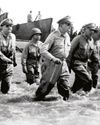
LEYTE 1944 SINKING THE RISING SUN
One of the more difficult island campaigns in WWII's Pacific Theatre saw a brutal months-long fight that exhausted Japan’s military strength

MAD DAWN
How technology transformed strategic thinking and military doctrine from the Cold War to the current day
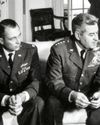
BRUSHES WITH ARMAGEDDON
Humanity came close to self-annihilation with the Cuban Missile Crisis, Broken Arrows’ and other nuclear near misses
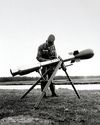
THE DEADLY RACE
How the road to peace led to an arms contest between the USA and USSR, with prototypes, proliferation and the world’s biggest bomb

THE MANHATTAN PROJECT
Einstein, Oppenheimer and the race to beat Hitler to the bomb. How a science project in the desert helped win a war